The Mystery of Winter Pruning and Care of Hydrangeas
The worldwide love of Hydrangeas, which give a pop of color and beauty our garden spaces. The varieties of shape colors, and arrangements, have also raised questions of care, pruning which will give years of beauty and flowers with just me basic care. First one must determine what type of hydrangea do you have. Here are other ways to determine the type.
1. Types of Hydrangeas and Pruning
Hydrangea macrophylla (Bigleaf Hydrangea)
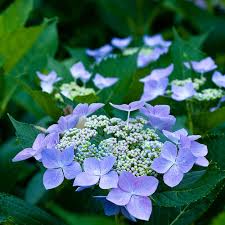
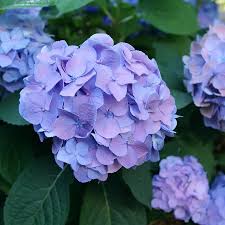
Known for its large, round flower or lace cap heads, this variety blooms in shades of blue, pink, purple, or white. It is one of the most popular varieties due to its versatility and beauty. Prune shortly after the flowers fade. Prune right above a node on strong, healthy new growth. You can also remove dead wood in spring or fall.
Hydrangea paniculata (Panicle Hydrangea)
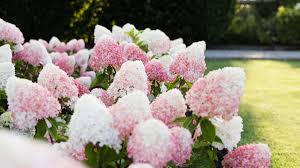
With its cone-shaped flower clusters, this variety produces white or pink blooms that gradually deepen to a deeper pink as the season progresses. It is a hardy plant and can tolerate both sun and partial shade. Prune back one-third of the old growth in late winter early spring. Also, any crossing branches.
Hydrangea quercifolia (Oakleaf Hydrangea)
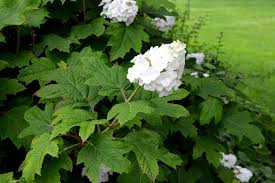
Named for its oak-shaped leaves, this variety adds texture to your garden. It produces beautiful white flowers that turn pinkish red in the fall, making it perfect for seasonal interest. Often left unpruned, but if you want to prune, you can right after flowering. Plant can be reduced by one-third. Remove any diseased or dead branches.
Hydrangea arborescens (Smooth Hydrangea)
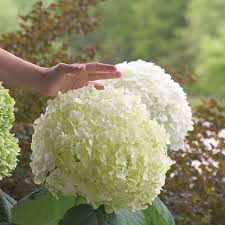
- This variety is known for its large, white blooms and is particularly hardy. It can tolerate a variety of climates and soil conditions. Prune hard to about 1 foot ot to the ground in early spring.
Climbing Hydrangea (Hydrangea anomala petiolaris)

This variety is perfect for gardeners who want to cover a trellis or wall with lush, green foliage and white flowers. The plant uses tendrils to adhere to the climbing surface. Prune climbing hydrangeas in the summer after they’ve finished flowering. Remove faded flower heads, cut back dead or straggly stems, and shorten any wayward shoots. Most flowers form towards the top of the plant, so try to leave as much of this un-pruned as possible. If you need to reduce the size of an established climbing hydrangea, try to do it over the course of several summers so that flowering is not affected too much.

February 24, 2023 by Nana Shames
Other tips
To rejuvenate a hydrangea, remove up to one-third of the older living stems down to the ground each summer. To control the size of a hydrangea, cut back before late July. Sometimes blooms will be sacrificed.
2. Choosing the Right Location
Hydrangeas thrive in different environments depending on their variety. Here are some tips for selecting the best spot for your plants:
- Sunlight Requirements:
Most hydrangeas prefer partial shade, especially in hotter climates, as direct sunlight can scorch their leaves. However, varieties like Hydrangea paniculata enjoy more sun and can tolerate it better. - Soil Type:
Hydrangeas prefer well-drained, slightly acidic soil. Adding organic matter like compost can improve soil structure and help the plants thrive. - Watering Needs:
Hydrangeas need plenty of water, especially during the warmer months. However, they don’t like to sit in waterlogged soil. Well-drained soil is crucial to prevent root rot.
3. Hydrangea Care Throughout the Seasons
Taking care of hydrangeas throughout the year ensures that they continue to bloom beautifully. Here’s a quick overview of seasonal care:
- Spring:
In early spring, remove any dead or damaged wood from the plant. If you have hydrangeas that bloom on old wood (like the Bigleaf hydrangeas), avoid heavy pruning. Fertilize with a balanced, slow-release fertilizer to encourage healthy growth. - Summer:
Hydrangeas typically bloom during the summer months. Keep the plants well-watered, especially in hot weather. You can prune dead flowers for tidiness, but be careful not to remove too much foliage. - Fall:
As the season cools, your hydrangeas may start to show off their fall colors. Some varieties turn shades of red or purple. In colder climates, it’s important to mulch around the base of the plant to protect the roots from freezing temperatures. - Winter:
In extreme colder regions, protect your hydrangeas by wrapping the plants with burlap or covering them with a thick layer of mulch to prevent frost damage. With proper snow coverage plants will be protected, when there are not winter burn conditions occur to the buds and stems.
4. Common Hydrangea Problems and Solutions
While hydrangeas are relatively low maintenance, they can occasionally run into problems. Here are a few common issues:
- Yellowing Leaves:
This is often caused by poor drainage or nutrient deficiencies. Ensure your hydrangea gets enough water and is planted in nutrient-rich soil. - Wilting Leaves:
Hydrangeas are prone to wilting during hot weather if they don’t get enough water. Water deeply and regularly, especially during dry spells. - Pests and Diseases:
Hydrangeas can sometimes be affected by pests like aphids or diseases like powdery mildew. Use organic insecticides or fungicides to treat these issues. Additionally, keep the plants well-spaced to improve air circulation, which can prevent fungal diseases.
5. Conclusion
Hydrangeas are an exceptional addition to any garden, offering beauty, versatility, and seasonal interest. Whether you have a sprawling garden or a small balcony, there’s a hydrangea variety that fits your space. By choosing the right type, providing proper care, and understanding how soil pH affects color, you can enjoy these stunning blooms year-round.
Are you ready to make your garden shine with hydrangeas? With a little attention and love, they’ll reward you with stunning flowers for seasons to come.


